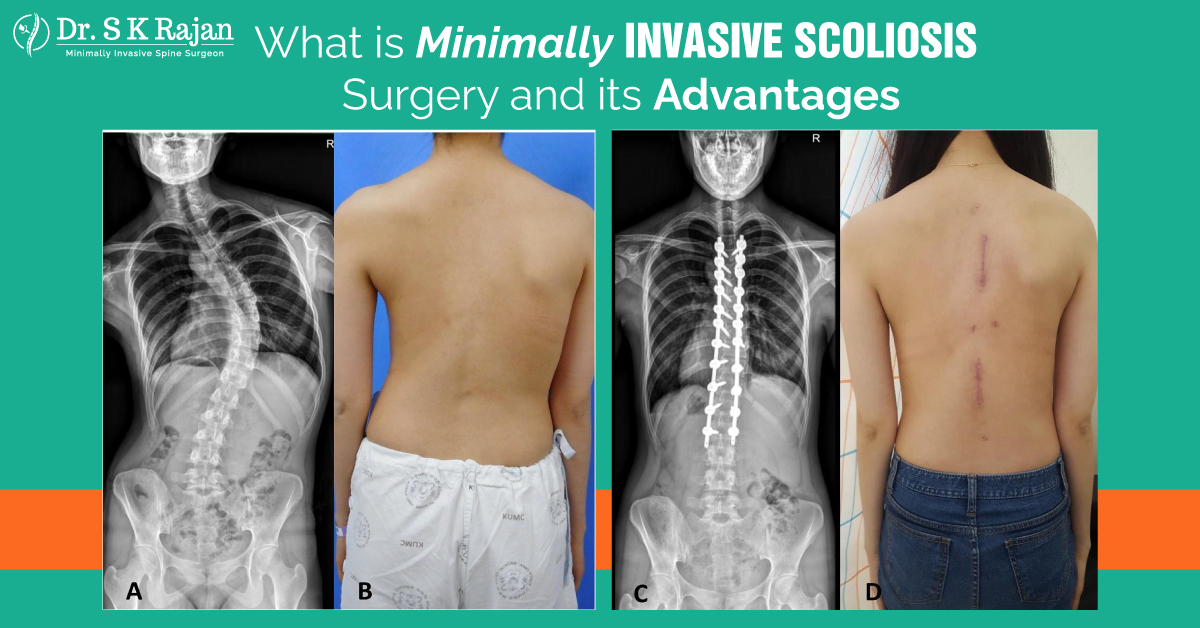
A few decades ago, spine surgery scared many people because the patient lost a lot of blood, had to stay in the ICU for a long time, and had to take a long time to get better after the surgery. The patients had to deal with several problems.
But spine surgery is not as complicated as it used to be. Surgeons all over the world use minimally invasive techniques to do surgery. As a result, there are few risks, and patients heal quickly. Minimally invasive spine surgery is the name of the process (MISS). It is a way to treat a herniated disc, degenerative disc disease, and spinal stenosis that is different from traditional open surgery. You can look up a scoliosis specialist on Google and talk to them.
Minimally invasive scoliosis surgery seeks to correct the curvature of the spine and halt its progression. Most of the time, the spine can't be entirely and perfectly straightened, no matter what procedure, but it can be made much better. The main difference between traditional surgery and minimally invasive scoliosis surgery is that minimally invasive surgery focuses on keeping as much healthy tissue as possible.
During minimally invasive surgery, the surgeon will use dilation technology to get to your spine. Instead of cutting through your muscle, as is often done in traditional surgery, this technology moves it out of the way or dilates it. Once they can see and touch the area being operated on, the treatment will begin.
Most traditional and minimally invasive surgeries for scoliosis are spinal fusions. To guarantee a stiff and straight recovery, the surgeon will transplant a portion of bone onto your vertebrae. But these procedures are likely to have a minor effect on your healthy tissue when they use minimally invasive techniques.
People with scoliosis who want to live an active life but haven't found relief with traditional treatments like physical therapy may benefit from minimally invasive surgery. At the moment, minimally invasive surgery is not the right way to treat all cases of scoliosis. Talking to your doctor will help you figure out what kind of scoliosis you have and how it should be treated.
Technology improvements have made minimally invasive surgery for scoliosis a more practical and effective choice. Here are some of the good things that can come from minimally invasive techniques:
With traditional methods, there is usually one extended cut, but with minimally invasive surgery, there are only a few minor cuts. This will make the scars more diminutive and less noticeable.
The small cuts also make an infection less likely to happen during or after the procedure. The speed with which minimally invasive procedures can be completed also depends on the surgeon's level of expertise. This means that fewer of your insides are exposed for a shorter time, making it less likely that you will get an infection or other problem.
In minimally invasive scoliosis surgery, muscles are stretched instead of cut. This means that less damage is done to the surrounding tissue as a whole. This means you lose less blood and feel less pain as you heal. Most spine surgeries cause pain, but the pain from minimally invasive techniques is usually easier to deal with than traditional open surgery.
The sum of these factors is the anticipated speedier recuperation times following minimally invasive surgeries. When there is less damage to the surrounding tissue, that tissue can heal faster. This means you can return to your normal activities more quickly than if you had a traditional surgery. Listening to your doctor's advice, getting a lot of rest, and working hard at physical therapy will also make a big difference in how well your surgery goes.
In this procedure, the doctor makes one of the minor cuts and puts an endoscope, a tool with a small video camera, into it. The endoscope shows pictures of the inside of the body on a TV screen in the OT. The doctor can do the surgery while looking at the internal images and the X-rays taken during the surgery. The endoscope and fluoroscopy can also show the spinal column and the chest cavity, which can help with placement in the spine.
Minimally invasive surgery for scoliosis is becoming more common and shows a lot of promise. Reducing damage to the surrounding tissue has a lot of benefits and has helped many patients get back to an active lifestyle quickly. But you should know that spine problems can be complicated. Talk to a doctor to fully understand your condition and how to treat it.